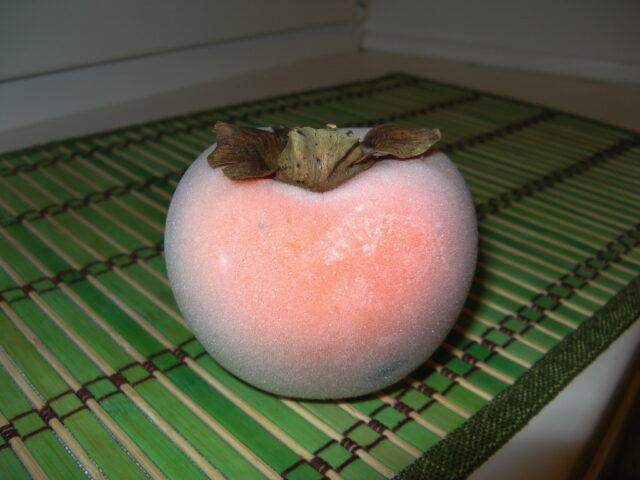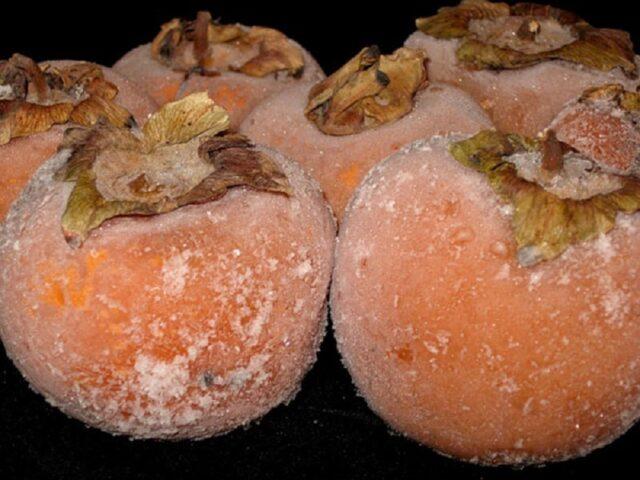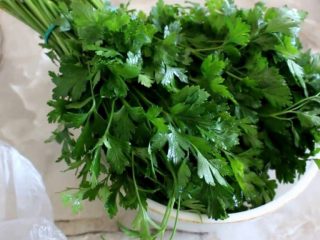Content
- 1 Do frozen persimmons lose their properties?
- 2 Why freeze persimmons?
- 3 How long can persimmons be stored in the freezer?
- 4 How to choose persimmons for freezing
- 5 How to freeze persimmons for long-term storage
- 6 How to freeze persimmons without knitting
- 7 How to defrost persimmons
- 8 What can you do with frozen persimmons?
- 9 Conclusion
Persimmon is an extremely healthy fruit, a valuable source of vitamins, macro- and microelements necessary for the normal functioning of the body. However, unfortunately, it is characterized by a pronounced “seasonality”. Fresh fruits appear on store shelves for literally 2-3 months, then again you have to wait another year. The problem of such a “deficit” can be solved if persimmons are frozen for the winter in a timely manner. In this case, its “presentability” will suffer, but the benefits will last for a long time.
Do frozen persimmons lose their properties?
If fruits are frozen, this will not affect the vitamins, macro- and microelements they contain. The benefits of this fruit remain fully intact after exposure to low temperatures. Characterized by the presence of high concentrations of vitamins A, C, group B, PP, phytosterols, as well as:
- potassium;
- calcium;
- magnesium;
- iodine;
- gland;
- manganese;
- copper;
- chromium;
- molybdenum;
- cobalt

If the fruit is frozen, it retains not only the taste, but also the benefits.
With such a rich composition, the complex beneficial effects of the fruit on the body are as follows:
- increase in general tone, physical and mental endurance, resistance to stress, at the same time causeless irritability and anxiety disappear;
- strengthening the immune system, recovering quickly after a viral or infectious disease or surgery;
- strengthening the walls of blood vessels, restoring and maintaining their elasticity, clearing cholesterol “plaques” (extremely useful for varicose veins and atherosclerosis), normalizing blood pressure;
- activating the body's defense against the negative effects of environmental factors, neutralizing free radicals, preserving youth for a long time, improving the condition of skin, hair and nails;
- acceleration of tissue regeneration processes at the cellular level;
- combating iron deficiency in the blood, stimulating the synthesis of red blood cells; for women, the fruit helps maintain hemoglobin levels during menstruation;
- normalization of the gastrointestinal tract, removal of waste and toxins;
- prevention of the development of cancer; according to some data, the fruit can neutralize not only carcinogenic, but also radioactive, toxic substances, salts of heavy metals;
Why freeze persimmons?
Persimmons are frozen for two main reasons:
- To be able to eat this seasonal fruit at any time of the year. Some are simply not ready to accept the fact that persimmons appear on store shelves only for a few months a year. The fruit that has been in the freezer can be eaten just like that or replaced with fresh persimmon in any recipe that requires its presence.
- To improve its taste. It is impossible to determine whether the fruit will be unpleasantly “knit” in the mouth by the appearance of the fruit (of course, if they are not completely green). In such specimens, not only the taste is affected, their consumption may well provoke stomach and/or intestinal upset. The tannin contained is “responsible” for the viscosity, which is destroyed under the influence of negative temperatures.
How long can persimmons be stored in the freezer?
If you keep frozen fruit in the freezer at a constant temperature of 18 ° C, its taste, nutritional and energy value, and beneficial properties will remain throughout the year. It must be remembered that once frozen, the fruit cannot be thawed and frozen a second time. After such manipulations, the persimmon turns into an unappetizing slimy brown pulp.
Frozen fruit should be sealed as tightly as possible to prevent air from entering. To do this, persimmons are wrapped in several layers of cling film or placed in special reusable freezer bags with a zipper.
If there is no seal, you will have to give the persimmons a separate shelf in the freezer.To avoid the transfer of pathogenic microflora, the fruit should be kept away from meat, poultry, fish, and mushrooms.
How to choose persimmons for freezing
To maximize the shelf life of frozen persimmons, you need to choose suitable fresh fruits:
- Ripe, but not overripe. The first can be determined by the shade of the skin (it varies markedly depending on the variety), its brightness and saturation. To understand that the fruit is overripe, just lightly press on it with your finger. Fruit that is not suitable for freezing will have a dent.
- The absence of even minimal damage to the skin that violates its integrity. The shell should be smooth and “glossy”. Specimens with cracks, dents, or dark spots on the skin that look suspiciously like developing mold, rot, or other pathogenic microflora are not suitable for freezing.
- Mandatory presence of leaves and stalk. They should be dry and uniformly greenish-brown in color.

The quality of the “raw materials” directly determines whether frozen persimmons will last for a long time and what their taste and appearance will be after defrosting.
The best choice for freezing is medium-sized persimmon. Too large fruits, if placed whole in the chamber, take up too much space. Small persimmons most often do not have a distinct taste or smell.
How to freeze persimmons for long-term storage
There are several ways to freeze persimmons for a long time. When choosing, they are guided by how much free space there is in the freezer. It is also important how the fruit is subsequently planned to be used.
Entirely
The easiest way is to freeze persimmons whole. The algorithm of actions is as follows:
- Wash persimmons in cool running water. You should not make its pressure too strong, as you can damage the thin skin and delicate pulp.The area around the stalk needs to be washed especially thoroughly. It is not recommended to remove it in order to preserve the integrity of the fruit.
- Place the fruits on paper or regular towels or napkins. Allow to dry completely. Even individual drops or a thin “film of water” on the surface of the skin in the freezer turns into ice crystals, “tearing” it and the pulp.
- Place each persimmon in a regular plastic or special plastic bag for freezing, or wrap in 2-3 layers of cling film.
- Keep in the freezer for at least 12 hours.

Storing whole frozen persimmons requires a lot of space.
Pieces
If persimmons are frozen in this way, they will subsequently be ideal for those who plan to use them as a filling for baked goods or an ingredient for preparing salads and desserts. The preparation in this case is similar to that described above. Then proceed like this:
- Remove the stem. Using a sharp knife with a thin blade, cut the persimmon into pieces of the desired size and shape, removing the seeds in the process. Most often, the fruit is divided into four, six or eight parts.
- Place the pieces on disposable plastic trays or containers, lining the bottom with cellophane, foil or baking paper. Wrap them in cling film, being careful not to damage the contents. You can also use plastic food containers. In this case, no film is required; the container lid will provide a seal. Pieces cannot be stored in open containers and trays; they quickly absorb any foreign odors.
- Freeze persimmons by placing containers with fruit in the freezer for at least 12 hours.

Do not make the persimmon pieces too small, otherwise they will turn into mush when defrosted.
As a puree
If you freeze persimmon puree, you can then add it to porridge, smoothies, curd mass, and other desserts of a similar consistency. It is prepared like this:
- The stem of washed and dry fruits is removed. Then they are cut in half, the seeds are removed, the skin is removed or the pulp is scraped out with a spoon.
- Grind the pulp in a blender until it becomes a homogeneous puree. You can also mince it or even grate it.
- Divide the puree into small disposable containers and thick plastic bags. Cover the top with cling film. Place in the freezer for 8-10 hours.

If you freeze the puree, the persimmons will not take up much space in the freezer
How to freeze persimmons without knitting
In order for the persimmon to lose its unpleasant viscosity, it must be frozen entirely using the same algorithm as described above. The minimum “exposure” period is 2-3 hours. But it's better to wait 10-12 hours. Then not only will the unpleasant tartness disappear, the frozen persimmon will also become noticeably sweeter.
“Metamorphosis” is easily explained by the fact that tannin, which provokes the appearance of an astringent taste in the mouth, is destroyed at sub-zero temperatures. Thus, you can significantly improve the taste of even unripe persimmons.
How to defrost persimmons
It is important to defrost frozen persimmons correctly. There are also several ways to do this.And you will have to choose what is more important – speed or aesthetics.
Fast
Persimmons will quickly defrost if, without unpacking or even removing the cling film, you put them in a container filled with hot (40-45 ° C) water. It should cover the entire fruit. Change the water as it cools.
Whole frozen persimmons can be eaten after 1.5-2 hours. Pieces and small portions of fruit puree require even less time.

When whole fruits are quickly defrosted, they lose their shape and the pulp turns into mush.
In the microwave
The frozen fruit, having removed the cling film from the container, is placed on the bottom of a special deep dish for the microwave, pouring a 1.5-2 cm thick layer of water onto the bottom. Then turn on the “Defrost” mode (if available), focusing on the approximate weight of the persimmon. If the device does not have such a function, it is simply set to minimum power.
In natural conditions
It will take about 4-5 hours to defrost a whole persimmon naturally. Remove the cling film from the fruits removed from the freezer, take them out of the bag, container, or other container and place them in the refrigerator for 2-3 hours. The defrosting process is brought to its “logical conclusion” at room temperature.

After “natural” defrosting, the fruit retains its shape and benefits, the consistency of the pulp remains virtually unchanged
What can you do with frozen persimmons?
Frozen persimmons, like fresh ones, are widely used in cooking:
- Mousses, jellies, and puddings are prepared from it;
- puree is added to ice cream, smoothies and other fruit cocktails, homemade yoghurts, curd mass, creams, desserts with cream cheese;
- turn the fruit into a filling for sweet pastries or a layer for cakes;
- prepare salads (persimmon goes very well with any green salad, cheeses, nuts).

A good addition to desserts with persimmons - mint, nuts and dark chocolate
The scope of use of frozen persimmons is not limited to cooking. Homemade face masks are made from it. The pulp is mixed in approximately equal proportions with:
- egg yolk;
- honey;
- any base oil used in cosmetology;
- homemade dairy products (cottage cheese, cream, sour cream, yogurt).
A course of such masks, consisting of 10-12 “sessions” with an interval of 3-4 days, provides the skin with intense nutrition, evens out its tone, and restores a healthy, fresh complexion. A pronounced lifting effect is also noticeable.

Persimmon is one of the most effective means for skin rejuvenation in the arsenal of home cosmetology
Conclusion
If you freeze persimmons for the winter, following simple rules, you can provide yourself with a supply of tasty and extremely healthy fruits for the coming year, just before the next “season”. The substances they contain that are necessary for the body can withstand a drop in temperature without compromising their properties. But tannin, “responsible” for the unpleasant viscosity, is destroyed, so after defrosting the taste of persimmon improves significantly. It can be eaten immediately or used to prepare various desserts and other dishes.








